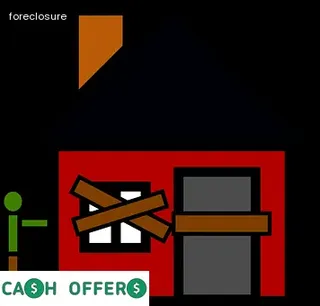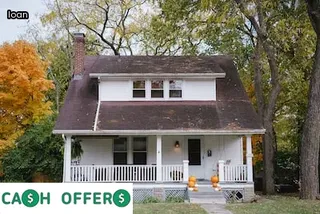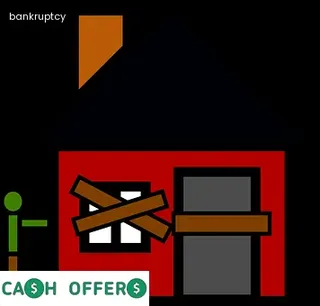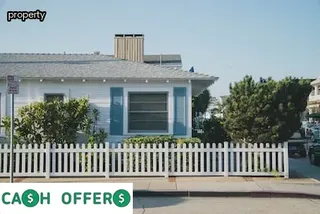Navigating the foreclosure process in South Dakota can be confusing and overwhelming for homeowners. It is important to understand the state's foreclosure laws to ensure that the person facing the foreclosure understands their rights and responsibilities.
Foreclosures in South Dakota are governed by both federal and state law, which vary from other states. The foreclosure process is initiated by a notice of default filed with the court, followed by a Notice of Sale being issued after a certain period of time has passed.
During this time, homeowners have an opportunity to cure or reinstate the loan, which involves paying all past due payments plus late fees and costs associated with the foreclosure. If reinstatement is not possible, the homeowner must vacate their home on or before the date indicated on the Notice of Sale.
It is also important to note that South Dakota does not require lenders to go through mediation before filing for foreclosure, although some may choose to do so in certain circumstances. Knowing these laws can help homeowners make informed decisions throughout this stressful process.

Navigating the foreclosure process in South Dakota can be a complex and difficult experience for homeowners. A pre-foreclosure is a situation where a borrower has defaulted on their mortgage payments, and the lender has initiated legal action to recover their losses.
During this period, homeowners have limited options to protect their home, and they must act quickly in order to avoid foreclosure. Homeowners who are facing pre-foreclosure should first contact their lender as soon as possible to discuss repayment options or loan modifications that could help them stay in the home.
They may also consider refinancing with another lender, although this may not be an option depending on their financial situation. Additionally, they should look into assistance programs offered by local non-profits and government agencies that could provide financial assistance or counseling services during this time of crisis.
Once all other options have been exhausted, homeowners who are still unable to make payments may need to consider selling the property or entering into a short sale agreement with the lender. Navigating the foreclosure process can be stressful and emotional for homeowners, but understanding each step of it will greatly improve the chances of successfully avoiding foreclosure.
When facing foreclosure, South Dakota homeowners must be aware of their legal rights. The most significant of these is the right to receive written notice from the lender before any action is taken.
This notification must state the reasons for foreclosure and provide an opportunity to pay any delinquent payments or resolve any other issues with the loan prior to proceedings beginning. Homeowners may also have the right to challenge a foreclosure in court if it is determined that there was a violation of state or federal laws, such as predatory lending practices or improper servicing of a loan.
Additionally, homeowners should be mindful of their rights regarding personal property located on the property being foreclosed upon. In most cases, they are entitled to remove all personal possessions prior to the sale.
Finally, it’s important for homeowners to research local laws and regulations related to foreclosures since these vary from state-to-state and can aid in protecting their rights during this process.

Navigating the foreclosure process in South Dakota can be a difficult and daunting task. Homeowners who are at risk of falling behind on their mortgage payments should take steps to avoid or delay the foreclosure process.
One strategy is to contact the lender as soon as they become aware of a potential issue with making their payments. It’s important to be honest and open with your lender about any financial difficulties you may be facing.
The lender will likely work with you to create an alternate payment plan or loan modification that can help keep you in your home while avoiding foreclosure proceedings. If a loan modification isn’t an option, other strategies include exploring refinancing options or selling the property.
You should also consider speaking with a housing counselor who can provide additional guidance and advice on how to navigate the foreclosure process in South Dakota.
In South Dakota, a deficiency judgment is a court order that requires the mortgage holder to pay the difference between the amount of money received from selling the foreclosed home and the total amount owed on the mortgage. This difference is referred to as the “deficiency balance”.
If the foreclosure sale does not bring enough money to cover this balance, then the court may award a deficiency judgment against the borrower. Deficiency judgments are generally limited to five years in South Dakota, with interest accruing at 6% annually after it is granted.
In addition, if there are multiple mortgages on one property, only one deficiency judgment can be awarded for each lienholder. To avoid a deficiency judgment being issued against them, homeowners should take steps such as filing for bankruptcy or making up any missed payments before or during the foreclosure process.
Additionally, homeowners may be able to negotiate with their lender in order to reduce the amount owed or receive other forms of relief from their debt obligation. It is important for homeowners in South Dakota who are facing foreclosure to understand all options available to them so they can make an informed decision about how best to navigate this difficult situation.

Navigating the foreclosure process in South Dakota is a complex undertaking for homeowners who are in danger of losing their homes. Seeking professional assistance can be a valuable tool to understand the entire process and avoid potential pitfalls.
Whether it's finding a lawyer to help with legal questions or consulting with a financial advisor to consider options, getting advice from trained professionals is an important step in the foreclosure process. From navigating paperwork and understanding your rights as a homeowner to formulating strategies for mitigating damage, qualified professionals have the expertise necessary to provide guidance and support throughout this difficult time.
Taking advantage of their services can help you make informed decisions when it comes to dealing with foreclosure issues and potentially save your home.
Failing to make mortgage payments on time in South Dakota can have a number of consequences. Most notably, borrowers may face the risk of foreclosure if they fall too far behind.
Homeowners may also be subject to late fees, higher interest rates and other penalties that can further complicate the process. In extreme cases, borrowers may even be faced with legal action from their lender or credit score damage that can affect future loans.
Furthermore, missing mortgage payments will likely also hurt a borrower’s creditworthiness and ability to secure other forms of financing. It is important for homeowners in South Dakota to understand the risks associated with not making their mortgage payments on time and take steps to protect against these outcomes.

Receiving a breach letter is an intimidating experience for homeowners in South Dakota who are facing the possibility of foreclosure. This document notifies them that they have defaulted on their mortgage and that the lender has begun the legal process to reclaim ownership of the home.
The breach letter outlines the terms of the default, including how much money is owed and what steps must be taken to avoid foreclosure. It also explains the rights and responsibilities of both parties.
While it can be overwhelming to receive such a notification, understanding its implications is key to navigating this difficult process. Homeowners should carefully read through the letter’s contents and seek legal advice from an experienced attorney if necessary, as this will help them understand their rights and obligations under the law.
Additionally, homeowners in South Dakota may want to research foreclosure prevention programs available in their area to explore potential alternatives before taking any further action.
In South Dakota, the foreclosure process typically begins after a homeowner has failed to pay their mortgage for more than 120 days. After this period, the lender will file a Notice of Default with the county clerk's office and publish it in a local newspaper.
This serves as an official notice that the lender is initiating foreclosure proceedings against the borrower. The homeowner then has up to six months to respond to the Notice of Default and either negotiate a repayment plan or arrange for another way to cure the delinquency.
If no action is taken after these six months have passed, then the lender can begin foreclosure proceedings through judicial or non-judicial means. Judicial foreclosures require filing a lawsuit with a court of law while non-judicial foreclosures are handled between the lender and borrower directly.
If the foreclosure is successful, then it will be followed by an auction where interested buyers can bid on the property at fair market value. Finally, if no one purchases it during this auction then it becomes owned by either the lender or third party buyer who purchased it from them at a discounted price.

Navigating the foreclosure process in South Dakota can be complicated and difficult to understand, particularly when it concerns state laws. To ensure homeowners have a comprehensive understanding of the foreclosure process, it is important to be aware of the legal regulations imposed by the state.
In South Dakota, foreclosures are conducted through non-judicial proceedings which means that lenders can repossess a property without having to go through court proceedings. Foreclosure sales may be either public or private; however, private sales are not allowed for agricultural land.
There are also certain protections for borrowers such as a 30-day period between when notice of sale is given and when it takes place as well as up to six months of redemption rights after a sale has occurred. Additionally, all parties must receive written notification prior to any sale and notices must also be posted in three public places for at least 20 days before a sale.
By understanding these applicable state laws, homeowners should feel more confident navigating the foreclosure process in South Dakota.
In South Dakota, homeowners have the right to reinstate before a sale of their property can be carried out. The homeowner may pay all past due payments, plus certain fees and costs, in order to bring their mortgage loan current and avoid foreclosure proceedings.
In order to exercise this right, homeowners must do so before the sale is held. If the balance is paid in full prior to the sale, then the foreclosure process will end and the homeowner will retain ownership of the property.
It is important for South Dakota homeowners facing foreclosure to understand that they can reclaim their home if they are able to meet certain requirements outlined by state law. Homeowners should research what those requirements are and determine if they qualify for reinstatement or other forms of loss mitigation such as forbearance or loan modification.
It is also important for homeowners to make sure that all documents related to the foreclosure process are filed correctly with their lender or servicer in order to ensure that they have fully exercised their right to reinstate before a sale.

In South Dakota, after a foreclosure sale is complete, homeowners have the right to redeem their home within the redemption period. This period begins on the day of the foreclosure sale and ends 3 months later.
During this time, homeowners can pay off the full amount for their home, including all fees and interest that were included in the foreclosure sale. If they are unable to do so, however, they will lose their rights to redeem the property.
Once this period is over, ownership of the home is legally transferred to the new owner. It is important for homeowners to understand their rights during this time and seek legal advice if necessary in order to protect their interests and make sure they are taking advantage of all of their options.
Navigating the foreclosure process in South Dakota can be a challenging and intimidating experience for homeowners. Working with a third party, such as an attorney or real estate agent, can help provide expertise and guidance to ensure homeowners have the best chance of coming out of the process successfully.
Attorneys specialize in navigating legal issues related to foreclosure, including understanding the rights and responsibilities of all parties involved. Real estate agents are knowledgeable about local market trends and may be able to negotiate better terms on behalf of homeowners.
There is also the option of working with a non-profit organization that helps individuals facing foreclosure with counseling services and financial aid. Having an experienced professional by their side can help homeowners understand the various aspects of foreclosure and make educated decisions at each step along the way.

The foreclosure process in South Dakota can be a difficult and time consuming experience for homeowners. However, understanding the steps of the foreclosure process is important to protect your credit from damage.
The first step is to stay informed: know your rights as a homeowner, learn about the timeline of foreclosure proceedings and keep up with any changes to foreclosure laws in South Dakota. Secondly, contact your lender as soon as you realize that you are unable to make payments.
Talk with them about potential options such as loan modification or refinancing. Additionally, contact a housing counseling agency if you need assistance navigating the foreclosure process or setting up payment plans.
Once your home is foreclosed on, it’s important to understand how this will impact your credit score. Most lenders will report the foreclosure on your credit report for seven years and could affect the ability to obtain credit after foreclosure.
You should also consider seeking legal advice if you have any questions or concerns about protecting your credit during the foreclosure process in South Dakota.
If you are a homeowner in South Dakota and find yourself unable to keep up with your mortgage payments, it is important to take action as soon as possible. The first step is to contact your lender and explain the situation.
This could potentially provide an opportunity for them to offer assistance in the form of a loan modification or forbearance agreement. If this fails, then you should look into other available options such as refinancing the loan or selling the property.
As a last resort, if it is clear that foreclosure is inevitable, then it may be beneficial to pursue a short sale or deed-in-lieu of foreclosure. In any case, it is important to stay informed about all of the various aspects of navigating the foreclosure process in South Dakota and make sure you understand all of your rights as a homeowner.
Additionally, consulting with a qualified attorney who focuses on real estate law can help ensure that you make educated decisions in order to protect yourself and your finances throughout this difficult time.

Considering bankruptcy as an option for avoiding foreclosure in South Dakota can be a difficult decision for homeowners. It is important to understand that filing for bankruptcy does not guarantee protection from foreclosure, but it might buy some time and provide other benefits.
Additionally, there are different types of bankruptcy that can be filed and each has its own set of advantages and drawbacks. Before deciding on this course of action, homeowners should consult with a qualified attorney to learn more about the impact filing for bankruptcy will have on their finances and whether it is the best course of action in their individual situation.
Homeowners should also be aware that certain debts might not be covered by bankruptcy, such as child support payments or student loan debt. All factors should be taken into account when exploring the possibility of filing for bankruptcy as a way to avoid foreclosure in South Dakota.
In South Dakota, the foreclosure process begins with a Notice of Default being sent to the homeowner. This document is a formal demand for payment and informs the homeowner that if full payment is not made within 30 days, then their property will be foreclosed on.
After this notice is issued, the lender will then file a Complaint in Foreclosure which starts the legal proceedings. The borrower must respond to this complaint or risk having a default judgment entered against them.
After the Complaint has been filed, South Dakota law mandates that a Notice of Sale be published in a local newspaper for at least three consecutive weeks prior to the sale date. On the day of the sale, an auction will take place where interested buyers can bid on the property.
If no bids are received, then ownership of the property passes to the lender who initiates foreclosure proceedings. Ultimately, it is up to homeowners to understand and navigate their way through this difficult process in order to protect their rights and interests throughout foreclosure proceedings.

People let their house go into foreclosure for a variety of reasons, including financial hardship, job loss, divorce, illness, and more. Financial hardship is often the main cause of foreclosure in South Dakota.
When homeowners are unable to keep up with their mortgage payments due to an unforeseen event such as a medical emergency or job loss, they may be faced with the difficult decision of letting their home go into foreclosure. Divorce can also result in the inability to pay a mortgage and subsequent foreclosure.
Other causes such as illness or disability can cause major changes in an individual's lifestyle and lead to them being unable to pay the mortgage. In these cases, it is important for homeowners to understand that there are options available to them when navigating through the foreclosure process in South Dakota.
It is also important for those affected by foreclosure to know that there are resources available to help them through this stressful time.
In South Dakota, the redemption period for foreclosure is governed by SDCL 43-45. After a foreclosure has been completed, the homeowner has six months to redeem their property.
During this period, they may pay the amount owed on the mortgage, plus interest and court costs that accumulated since the foreclosure sale. The homeowner must also pay any additional fees or taxes that have accrued since the sale.
The homeowner may also submit a bid to reclaim their home during this six month redemption period. If successful, they will be able to keep their property and continue making payments on their mortgage as usual.
If not successful, they will forfeit ownership of their home and must vacate the premises within 30 days of receiving notice from the court. It is important for homeowners facing foreclosure in South Dakota to understand their rights and responsibilities during this redemption period, as it can be a complex process with significant consequences if not handled properly.
In South Dakota, homeowners facing foreclosure have the right to redeem their home and protect their equity. This is called the Right of Redemption and it gives homeowners a period of time after the foreclosure sale to reclaim their property.
During this period, homeowners may pay off the full amount due on the loan and any other costs related to the foreclosure process. If this happens, then the homeowner can keep their home without having to go through with the foreclosure sale.
The length of time for redemption depends on what type of mortgage was taken out by the homeowner, but it usually ranges from 30 to 120 days after a Notice of Foreclosure Sale has been recorded in county records. Homeowners should consult with an attorney or housing counselor familiar with South Dakota law in order to understand all of their options during this process.
A: The foreclosure process in South Dakota begins when a homeowner falls at least 90 days behind on their mortgage payments. At this point, the lender can file for foreclosure proceedings, which start with the filing of a complaint and summons in circuit court. Once the complaint is filed, a Notice of Pendency of Action is sent to the homeowner, informing them that a foreclosure action has been initiated. The homeowner then has 20 days to respond to the complaint by either contesting it or filing an answer with the court. If they do not respond, they will lose their right to contest the action and a default judgement will be entered against them. After all legal proceedings have concluded, if the homeowner still cannot pay off their loan balance, then the house will go into foreclosure and be sold at public auction.